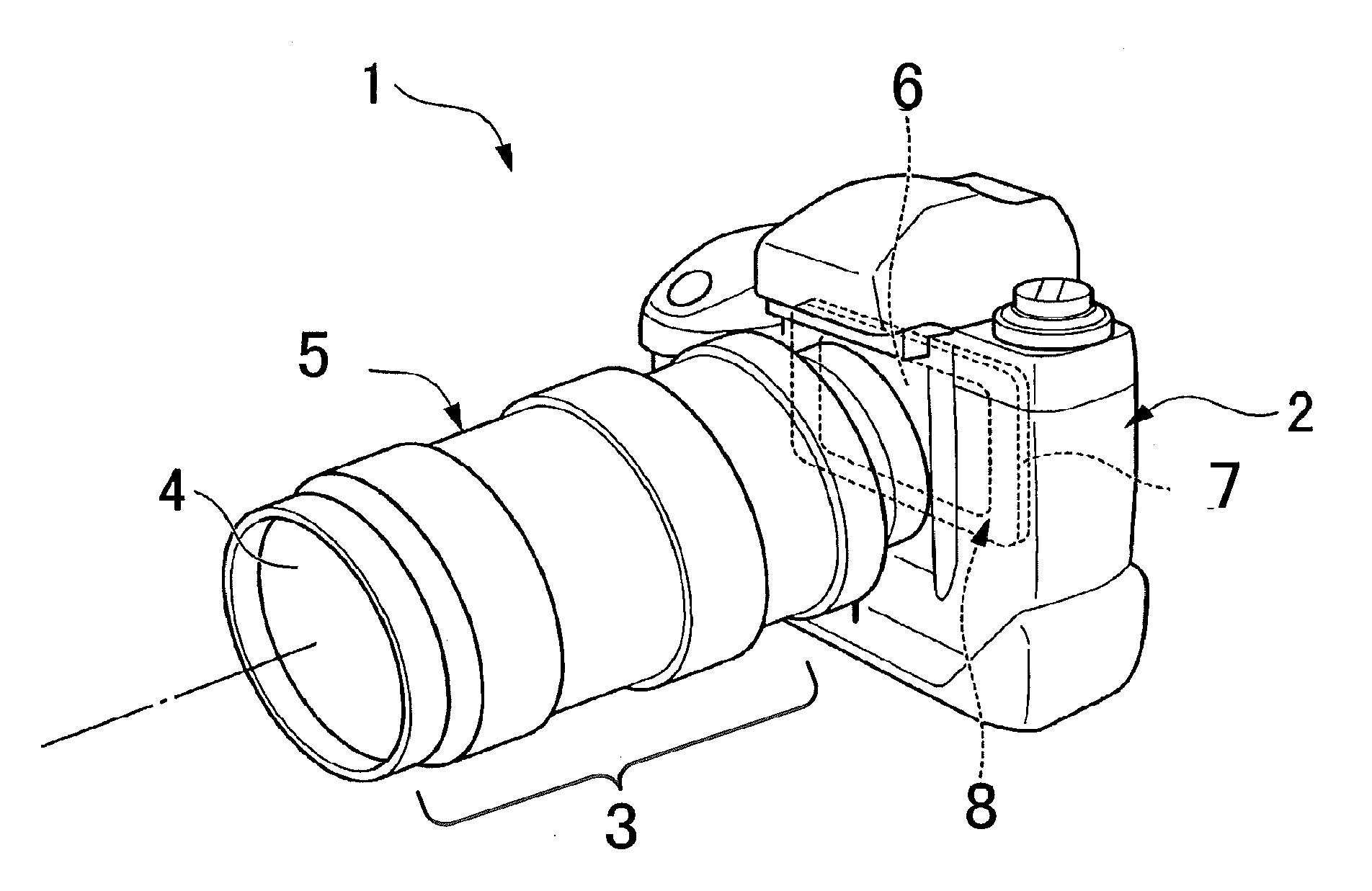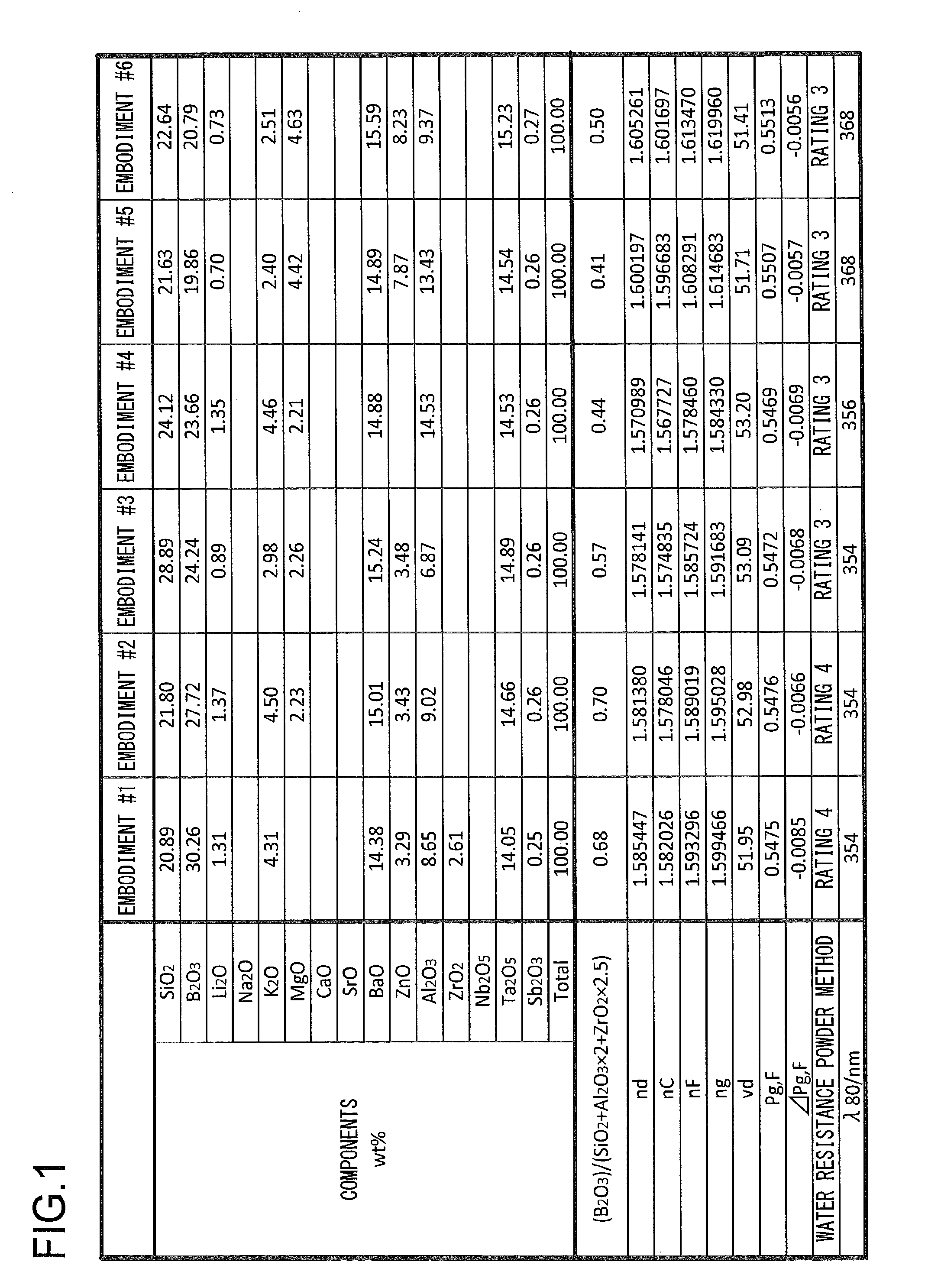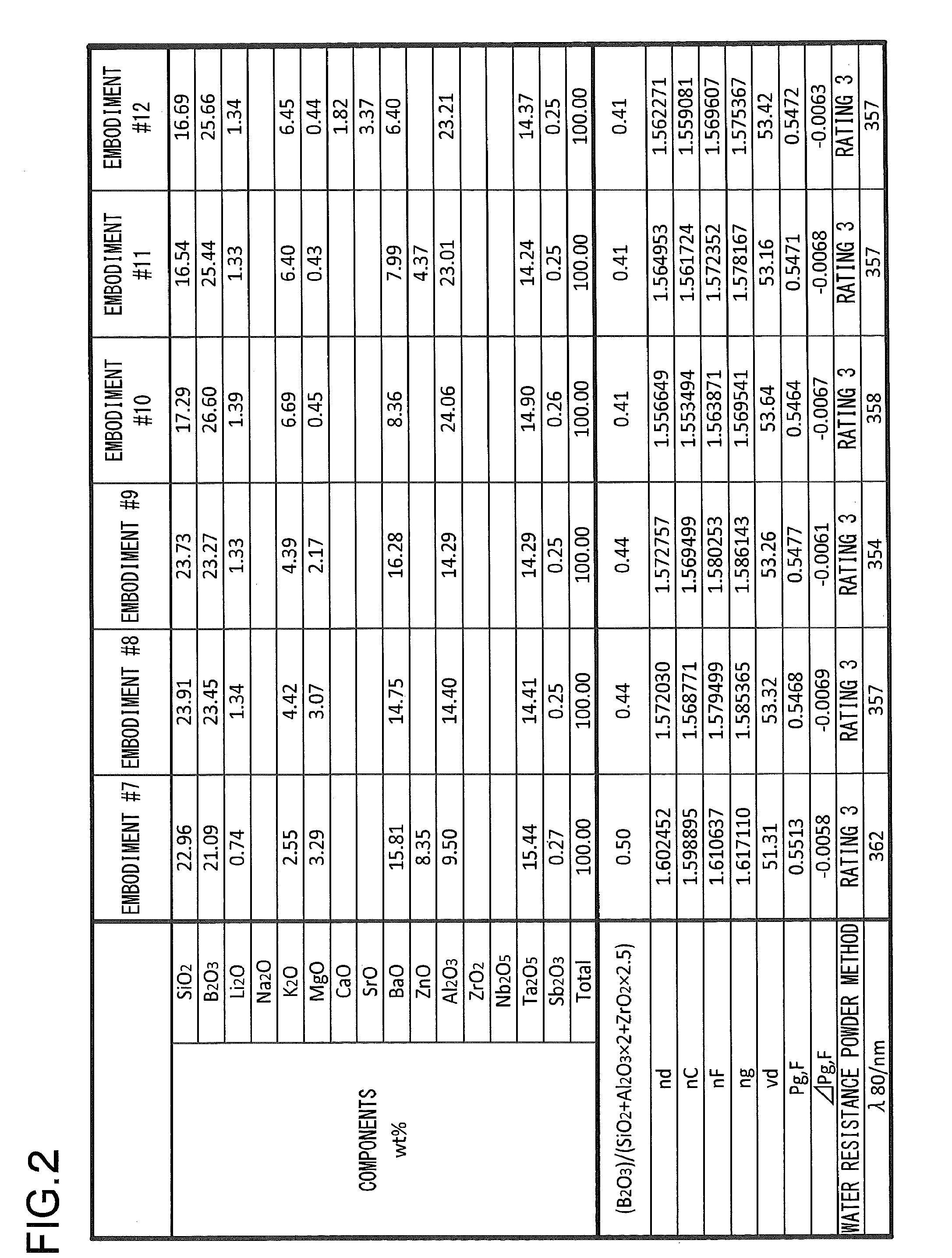Optical glass, optical element, optical system, and optical device
a technology of optical elements and optical glass, applied in the field of optical glass, can solve the problems of residual color aberration, secondary spectrum, and inability to produce optical designs, and achieve the effects of reducing the number of optical elements
- Summary
- Abstract
- Description
- Claims
- Application Information
AI Technical Summary
Benefits of technology
Problems solved by technology
Method used
Image
Examples
Embodiment Construction
[0030]Optical glasses according to various embodiments of the present invention will now be explained with reference to the drawings. The optical glass according to the present invention is an optical glass in a specified composition region of the SiO2—B2O3—Al2O3—(Ta2O5, ZrO2, Nb2O5) series that does not substantially contain any substances such as PbO or As2O3 which can contaminate the environment. Here, “does not substantially contain” means that no substantial compositional component having an influence upon the characteristics of the glass composite material is included as an impurity, above a density thereof that is unavoidably included. This optical glass has high chemical durability, and exhibits a large negative anomalous dispersion in the ultraviolet region from the short wavelength side of the visible region. In the following explanation, nd denotes the refractive index of the glass for light of wavelength 587.562 nm. Furthermore, vd is given by the following Equation (1)....
PUM
| Property | Measurement | Unit |
|---|---|---|
| Abbe number vd | aaaaa | aaaaa |
| Abbe number vd | aaaaa | aaaaa |
| refractive index nd | aaaaa | aaaaa |
Abstract
Description
Claims
Application Information
 Login to View More
Login to View More - R&D
- Intellectual Property
- Life Sciences
- Materials
- Tech Scout
- Unparalleled Data Quality
- Higher Quality Content
- 60% Fewer Hallucinations
Browse by: Latest US Patents, China's latest patents, Technical Efficacy Thesaurus, Application Domain, Technology Topic, Popular Technical Reports.
© 2025 PatSnap. All rights reserved.Legal|Privacy policy|Modern Slavery Act Transparency Statement|Sitemap|About US| Contact US: help@patsnap.com



